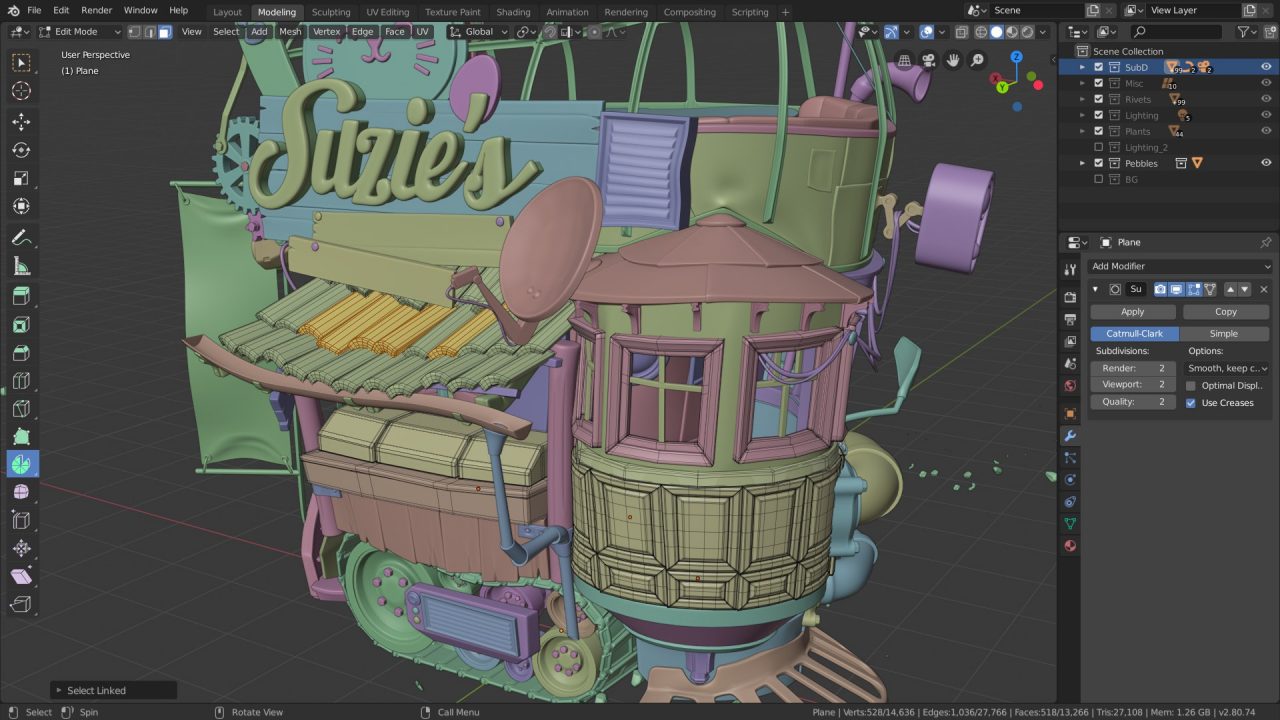

During the export process only the 3D geometry data, materials, lights and the 3D view are being converted.Limitations at exporting Archicad models to CINEMA 4D by saving 3D view and freeform modeling: As UV mapping cannot be used for solid models in Archicad, one should use convertible projections for objects that should take part in solid operations, and for the other situations, one should set the resulted GDL objects’ model behavior parameter to ‘Preserve textures’. Those projections for that it is possible will be converted into the corresponding projections in Archicad, in other cases UV mappings are computed from the projections, and these mappings are used in Archicad. There are differences in the texture projection algorithms of Archicad and CINEMA 4D, and CINEMA 4D also offers more projection methods than Archicad.

One should use the default material model for creating materials for conversion. In these cases parameters and parameter categories are used that are not known by the converter, so these settings are ignored, and if there is not any parameter among the material’s settings that could be converted, the whole material conversion is skipped, and no material is assigned to the converted object in Archicad. Beside the default material model structure there is the possibility in CINEMA 4D to create materials based on different lighting model.While in CINEMA 4D textures can be applied to many kinds of settings (like luminance, transparency), Archicad use textures only for determining object colors, so even the bitmap textures are ignored during the conversion when applied to non color material properties. The only textures one can convert are the bitmaps loaded from image files (jpg/png/bmp). These cannot be converted, while these algorithms are not implemented in Archicad. CINEMA 4D also offers textures that are based on singular algorithms that are computed during rendering.Some of these parameters have according material settings with exactly the same functionality in Archicad, some others can be converted, but there are some that cannot be interpreted by the rendering engine of Archicad, these are simply ignored. There are a large number of parameters for setting the materials’ visual behavior when affected by direct or indirect light or like glowing, transparency, etc. CINEMA 4D offers much more material setting possibilities than Archicad does.

During the import process only the material and geometry data is being converted.This, coupled with the ability to create your own keyboard shortcuts means that you, the animator, can make this app as intuitive or as complex as you like.Limitations at importing CINEMA 4D models into Archicad by loading, merging c4d type files and by freeform modeling: Perhaps what we like most about this app is that, even though it’s aimed at the pros, it also comes with a beginner mode, meaning that others can start off with zero knowledge and take the time to get to know the app until they feel it’s time to switch the beginner mode off. You can do this by using your computer mouse or by drawing with a tablet pen. Another neat feature we like about Moho is the ability to draw vector shapes within the app itself. Like many tools, on the list, you can import your own asset or choose from their library, which includes all sorts of scenes, props, stock audio files and characters that are ready to go. When it comes to editing the animations and creating movement, you can use the bone pinning feature to animate and reshape assets. In terms of image editing, using bitmap drawing tools and brushes, you can create complex and unique textures and fancy effects. Lastly, other features include the obvious ones – a good scrubbing feature, colorized takes, the ability to hide or isolate certain tracks and a grouping feature for easy organization. With adobe Sensei, you can import audio tracks and the app does all of the work for you and animates the character by intelligently mapping the audio track to facial expressions and movements, all done with machine learning. One of the other really interesting features that separates adobe character animator from other apps on this list is the Adobe Sensei feature. It’s also very easy to import art from other apps and then just animated it using your webcam.
FREE 3D ANIMATION SOFTWARE DOWNLOAD FOR MAC PRO
Of course, being an Adobe product, the integration with apps like after effects and premiere pro is like one big happy family. We’re not quite sure why most digital animators would need such a feature on a regular basis, but hey – it sure is a cool addition! The tracking software is so powerful that it’s even able to track your eye movements in real-time and map them onto your animated character. But the craziest thing? You can even livestream your animations so that others can tune in as you animate.


 0 kommentar(er)
0 kommentar(er)
